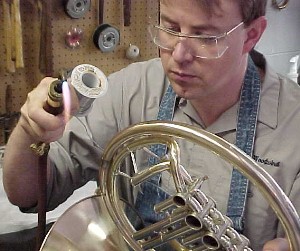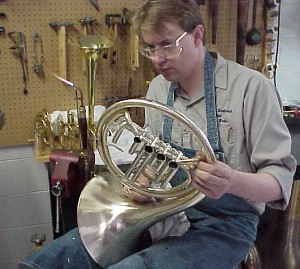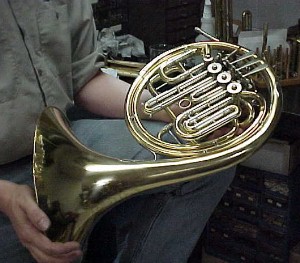
Now that we have worked our way through the messy parts, we can put the instrument back together.

After having reassembled the bell and main body branches, Dan is seen mounting the valve set and internal branches. During the assembly process, where solder and flux are used, every effort is made to avoid internal stress on the instrument by not forcing the pieces together.

Once the body and valve assembly have been joined together, we are ready to mount the mouthpipe in its proper position with respect to its carrying case. Once this is completed, brass instruments, in most cases, are ready for plating or lacquer finish. In the case of this particular instrument, it will be left with a raw brass finish. We are then ready to install valves, slides, and linkages.

Above is the final product! Though we would not consider this a full restoration, we found the results to be very satisfactory. As for its playability, all we can say is: wow! Oberloh Woodwind and Brass Works wishes to thank Mr. Cliff Drake, the owner of this wonderful french horn for allowing us the opportunity to show a small glimpse of what is involved in the repair and restoration of fine brass instruments.
Oh yeah, the Conn 8D:
It was a lot of work and a lot of headache, but very worthwhile. What was once trash is now treasure and resides in the hands of a talented professional horn player who truly appreciates the grandeur of a quality horn that in our opinion is the best 8D we have ever seen, bar none.
If you have any questions or comments regarding the work we do here at Oberloh Woodwind and Brass Works, please do not hesitate to call or e-mail us.